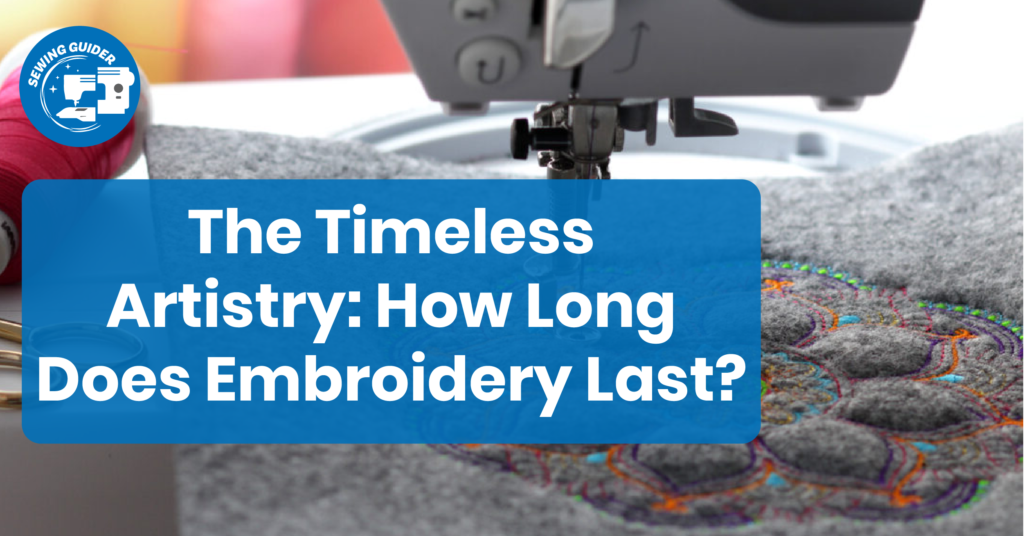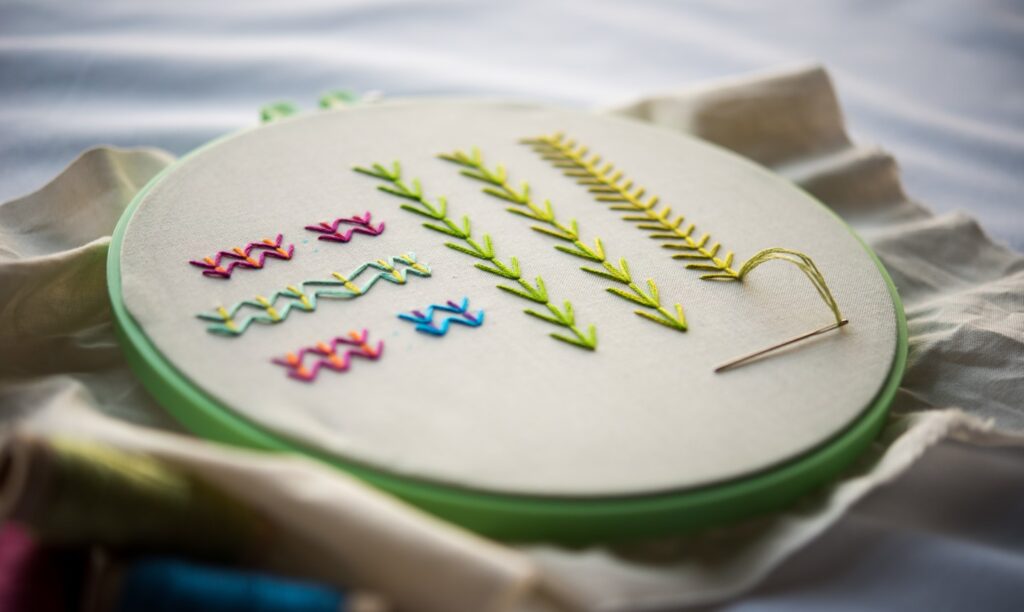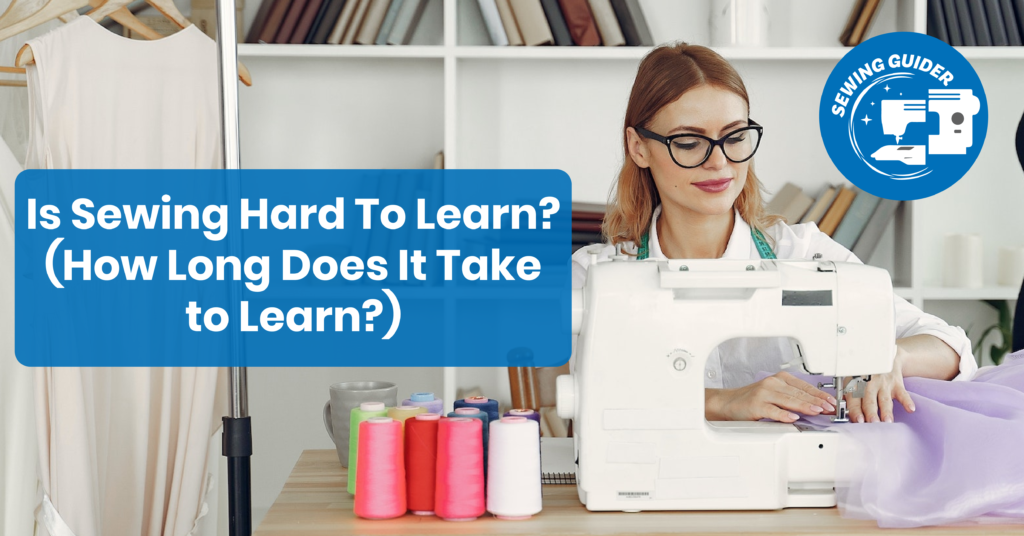For centuries, embroidery, an intricate art form in which threads are woven into intricate patterns, has captured the hearts of many. The timeless appeal of embroidery is evident in its use in textiles, clothing, and home décor. How long does embroidery last? This article explores the factors that affect the longevity of embroidered pieces and offers tips on preserving their beauty for future generations.
Understanding Embroidery Durability:
The durability of embroidery depends on many factors, including the materials used, the technique, maintenance, and exposure to wear. The longevity of embroidery is enhanced by using high-quality materials, such as durable threads and fabrics. The technique is also essential: machine embroidery can have a different lifespan than handcrafted work due to differences between tension and stitching techniques.
Factors Influencing Longevity:
Thread Quality:
Choose high-quality threads to resist fading or fraying.
Fabric choice: Durable materials like cotton, linen, and silk blends will last longer than delicate fabrics.
Stitch density:
Tighter stitches will last longer, as they are less likely to unravel over time. Limit exposure to elements such as sunlight and moisture to extend the life of your garment.
Use and care:
Delicate embroidery intended for special occasions may last longer than those used daily.
Preservation Techniques:
Washing:
Hand wash gently with cold water and mild detergent. Avoid rubbing or wringing the embroidery out.
Storage:
Store embroidery away from extreme temperatures, moisture, and direct sunlight. They can be stored flat or rolled up in acid-free tissues.
Framing:
Framing pieces under UV-protective glasses protects them from dust and sunlight. This ensures their longevity.
Rotation:
Rotate displayed embroidery to minimize exposure to light and environmental stressors.
What Are The Disadvantages of Embroidery?
Embroidery is a prevalent and versatile decoration method, but some disadvantages exist. In particular, it can take a lot of time. Due to the labor-intensive nature of embroidery, it may be more expensive than other decoration methods. High-detail designs may increase thread density, which could affect comfort.
Time-consuming:
Embroidery is a time-consuming process, mainly when done manually. The stitching of intricate designs can be slow, especially if they are done by hand.
Cost:
The complexity of embroidery can increase costs, particularly for large or intricate designs. Cost includes both materials and skilled labor.
Thread Density:
Highly detailed designs may require a higher density of threads, which could affect the fabric’s comfort or flexibility.
Design Limitations:
Digital printing is better than embroidery for reproducing subtle or extremely detailed color gradients.
Bulkiness:
Thick embroidery threads and thick threads can cause the fabric to be bulky, making it unsuitable for some garments. This is especially true of lightweight fabrics.
Limit Color Blending:
While advances in embroidery technology have increased color options, achieving seamless color gradients and blending can still be tricky.
The durability of Delicate Fabrics:
The embroidery may only last for a short time on delicate fabrics as it would in a more durable material, resulting in fabric distortions or damage.
Complex Care:
Items that are embroidered often need special attention when washing them to avoid thread fraying or distortion of the design. It requires an additional step of maintenance in comparison to printed items.
Design Adaptation:
When translating specific designs to embroidery, it may be necessary to simplify the design. This is especially true if there are fine lines and intricate textures.
Which is better, hand or machine embroidery?
Both machine and hand embroidery have their advantages. Hand embroidery adds a personal touch and intricate detail to each piece. Machine embroidery is quicker and more accurate. Select based on the outcome you want and your preferences.
How to Prevent Embroidery from Fading?
Avoid prolonged exposure to direct sun, as UV rays will fade the threads and fabric. When framing embroidered items, keep them away from windows and use UV-protective glasses. Storage in a dry, cool place will also help prevent fading.
How long does embroidery last?
The longevity of embroidery depends on the materials, techniques, and how they are maintained. If properly maintained, high-quality pieces of durable fabrics can last decades. The longevity of a piece is affected by factors such as thread quality and exposure to environmental elements.
Can I Wash My Embroidery?
You can wash embroidery using mild detergent and cold water, but only by hand. Avoid scrubbing or machine washing, as this can damage embroidery. To maintain the integrity of the embroidery, air dry flat.
Can I iron over the embroidery?
Be careful when ironing over embroidery. Place a thin cloth between the ironing board and the embroidery to prevent direct heat contact. Avoid excessive pressure and use the lowest setting of the iron to avoid damaging or flattening the design.
What’s better: Embroidery or Print?
Print or embroidery? It depends on what you want to achieve. Print offers more detail and color reproduction, but embroidery has a premium, textured appearance.
Conclusion
Embroidery, a testament to human ingenuity and artistry, can endure for generations if treated with care and respect. How long does embroidery last? So, by understanding the factors that influence its longevity and following preservation techniques, we can continue to marvel at the beauty of these stitched creations for years to come. As the hands that craft these masterpieces change, the stories they carry remain woven into the very fabric of our history.
Frequently Asked Questions
Does Hand Embroidery Last Longer Than Machine Embroidery?
Hand embroidery often lasts longer due to careful stitching and tension control. However, hand and machine embroidery can endure well with quality materials and proper techniques.
Can I Wash Embroidered Items Without Damaging the Design?
Yes, you can wash embroidered items. Hand wash with a mild detergent in cold water, avoiding vigorous rubbing. Gently pat dry and lay flat to air dry. Avoid machine washing, as it can lead to thread fraying.
Does the Choice of Fabric Impact the Longevity of Embroidery?
Absolutely. Durable fabrics like cotton, linen, and silk blends tend to hold up better over time than delicate materials. Choose fabrics with tight weaves to prevent thread unraveling.
How Does Sunlight Affect Embroidered Pieces?
Prolonged exposure to sunlight can fade threads and weaken fabrics. Display your embroidery away from direct sunlight or use UV-protective glass to preserve its vibrancy when framing.
Can I Repair the Embroidery That Has Started To Unravel?
Yes, minor unraveling can often be repaired. Secure loose threads using a small, sharp needle. It’s best to consult a professional embroiderer or textile conservator for extensive damage.
Are There Any Special Considerations for Storing Embroidered Pieces?
Store embroidered items in a cool, dry place, away from sunlight and moisture. Acid-free tissue paper can help prevent creasing, and rolling pieces instead of folding them minimizes stress on the fabric.
Can I Display My Embroidery Outdoors or in Humid Areas?
It’s best to avoid displaying embroidered pieces in outdoor or highly humid areas, as moisture and extreme conditions can accelerate deterioration. Opt for controlled indoor environments instead.
How Can I Ensure My Embroidered Heirlooms Are Passed Down Intact?
Educate younger generations about the piece’s significance and proper care techniques. Consider providing written instructions to ensure the embroidery’s preservation for future generations.
How Can I Minimize Wear and Tear on Embroidered Items?
To extend the life of your embroidery, avoid excessive rubbing, pulling, or snagging. Use embroidered items for their intended purpose and handle them carefully to prevent unnecessary damage.





